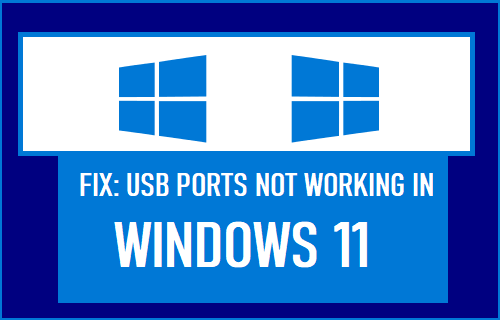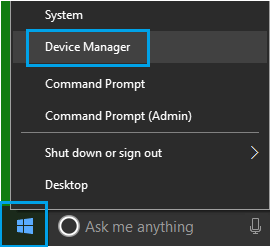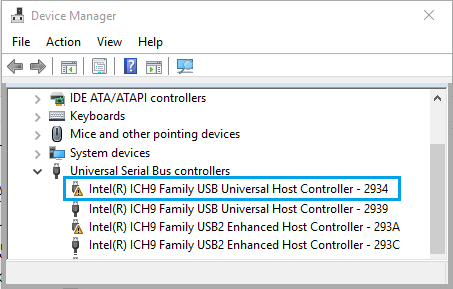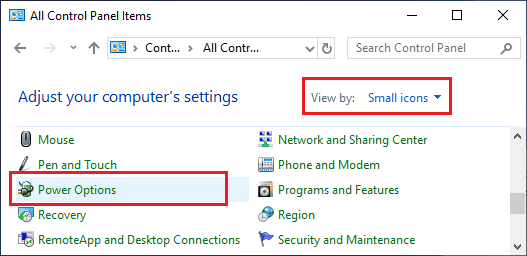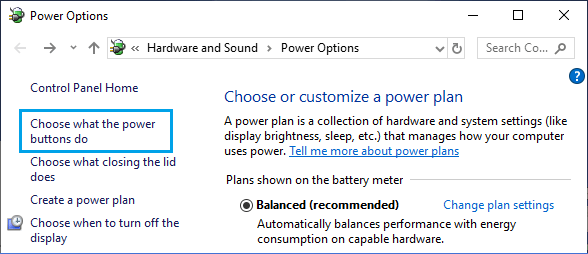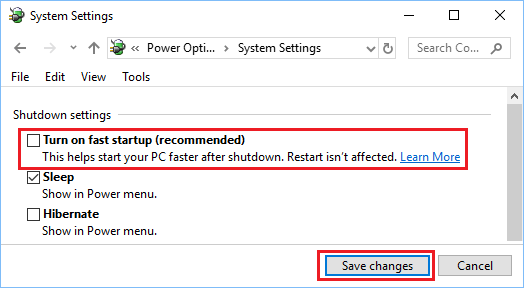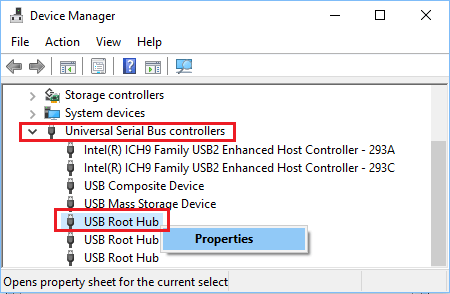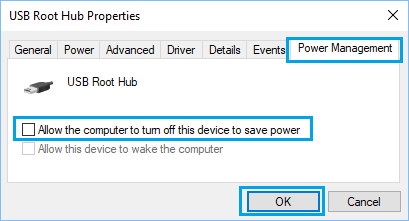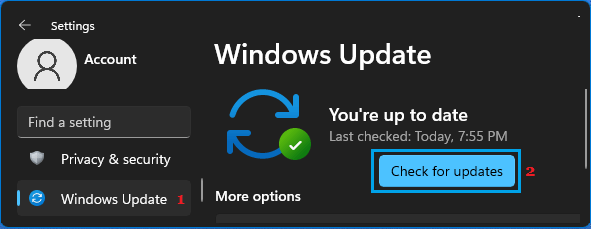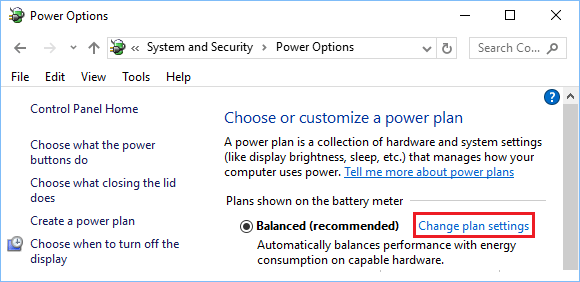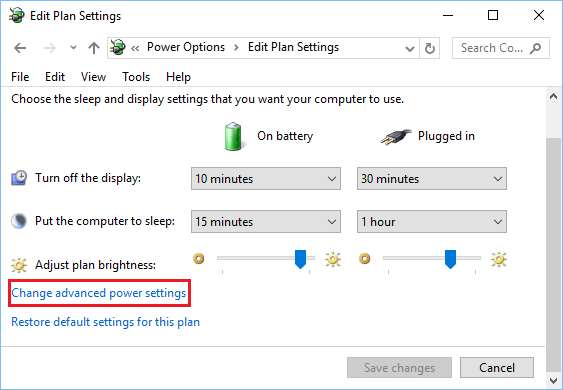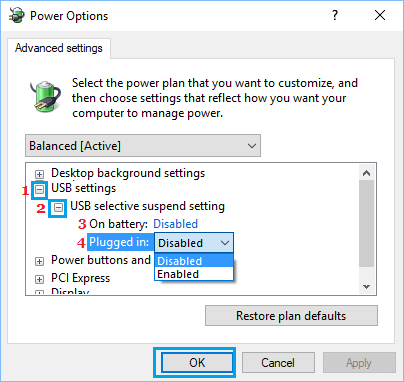USB Ports Not Working in Windows 11
The problem of USB ports not working on a Windows 11 computer could be due to various reasons, ranging from outdated or corrupted drivers to Power Supply to USB Ports being switched OFF and other reasons. Before going ahead with troubleshooting steps, plug another USB device into the same USB Port to confirm that the problem is with the USB Port and not with the USB device itself.
1. Power Off Computer and Start Again
The problem could be due to a glitch preventing the USB Port/Device from functioning properly. In most cases, such problems can be fixed by restarting the computer. Switch OFF the computer > Make sure you wait for 30 seconds and Restart the computer.
2. Reinstall Faulty Device Drivers
Right-click on the Start button and click on Device Manager.
On Device Manager screen, expand Universal Serial Bus Controllers entry, right-click on the USB Controllers with an exclamation mark and select the Uninstall option.
Repeat the above steps for other USB Controllers with exclamation marks and Restart the computer. Once the computer restarts, Windows 11 should automatically load the right drivers for USB Ports on your computer.
3. Disable Fast Startup
The Fast Startup feature in Windows 11 can sometimes lead to USB Device drivers not being properly loaded or skipped during the startup process. Open Control Panel > On Control Panel screen, switch to Large or Small Icons view and click on Power Options.
On Power Options screen, click on Choose What the Power Buttons Do.
On the next screen, scroll down to “Shutdown Settings” and uncheck Turn on fast startup option.
Click on Save Changes to save and implement this change on your computer.
4. Change Power Management Settings
Windows 11 has a default tendency to switch OFF power supply to unused USB ports and this can sometimes lead to the problem of USB Ports not working. Right-Click on the Start button and select Device Manager in the menu that appears. On Device Manager Screen, right-click on USB Root Hub and click on Properties.
On the next screen, switch to Power Management tab and uncheck Allow the computer to turn off this device to save power option and click on OK.
Note: Repeat the above steps for all USB Root Hub entries.
5. Check for Updates
The problem could be due to a Windows update being downloaded or waiting to be installed on the computer. Go to Settings > click on Windows Update in the left-pane. In the right-pane, click on Check for Updates button.
Allow Windows to check for updates and follow the instructions to download and Install Updates (If available).
6. Disable USB Selective Suspend Setting
In case all the USB Ports are not working on your computer, you can disable Selective Suspend Power Setting for all the USB Ports on your computer. Open Control Panel > On Control Panel screen, switch to Large or Small Icons view and click on Power Options.
On Power Options screen, click on Change Plan Settings link located next to the current Power Plan.
On the next screen, select Change Advanced Power Settings link.
On Power Options screen, click on USB Settings > USB selective suspend setting and select the disabled option for “Plugged In” and also for “On Battery” (If you are using a Laptop).
Click on OK to save these Power Settings on your computer.
How to Disable Startup Programs in Windows 11 How to Reset Firewall Settings in Windows 11
